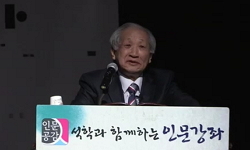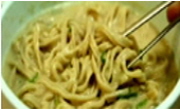신라고고학 연구는 다양한 물질자료를 토대로 연구되는데 그 중 한 가지가 토기다. 이 가운데 경주에서 출토된 신라토기는 왕경의 중심지에서 출토되었으므로 신라 연구에 기초가 된다. 신...
http://chineseinput.net/에서 pinyin(병음)방식으로 중국어를 변환할 수 있습니다.
변환된 중국어를 복사하여 사용하시면 됩니다.
- 中文 을 입력하시려면 zhongwen을 입력하시고 space를누르시면됩니다.
- 北京 을 입력하시려면 beijing을 입력하시고 space를 누르시면 됩니다.
https://www.riss.kr/link?id=T15097134
- 저자
-
발행사항
부산 : 부산대학교 대학원, 2019
-
학위논문사항
학위논문(석사)-- 부산대학교 대학원 : 고고학과 2019. 2
-
발행연도
2019
-
작성언어
한국어
- 주제어
-
발행국(도시)
부산
-
형태사항
143 ; 26 cm
-
일반주기명
지도교수: 김두철
-
UCI식별코드
I804:21016-000000138687
- DOI식별코드
- 소장기관
-
0
상세조회 -
0
다운로드
부가정보
국문 초록 (Abstract)
신라고고학 연구는 다양한 물질자료를 토대로 연구되는데 그 중 한 가지가 토기다. 이 가운데 경주에서 출토된 신라토기는 왕경의 중심지에서 출토되었으므로 신라 연구에 기초가 된다. 신라토기의 한 기종인 병은 삼국시대부터 통일신라시대 전반에 걸쳐 사용된 토기다.
고분을 비롯한 생활유적에서 다양한 종류의 병이 출토되지만 신라토기 연구에서는 주로 6~7c대의 고분출토품에 한정되어 진행되었다. 병은 삼국시대와 통일신라시대 전반에 걸쳐 출토되고 유구의 성격에 따라 출토되는 양상이 다르다. 그래서 종류도 다양하며 유행시기도 각각 다르기 때문에 출토되는 병을 통해 시기별 유행양상을 파악할 수 있다. 그럼에도 전체 병에 대해 다룬 연구가 없어, 세밀한 연구가 필요함을 인식해 삼국시대~ 통일신라시대 분묘유적과 생활유적에서 출토되는 병들을 분석해 보았다.
먼저 병이란 목경비(목저경/동최대경)가 0.5 미만인 것 즉, 목경이 동최대경의 절반(½) 미만에 해당하는 것으로 정의하였다.
선행 연구에서와 같이 병은 동체와 구경 두 속성을 중심으로 분류했다. 동체는 다양한 형태의 병을 종류별로 구별하게 해주는 표지적인 속성이며 형태와 동체비(동최대경/동체고)를 통해 15가지 유형으로 분류된다. 구경은 한 종류의 동체에 여러 형태의 구경이 조합되거나, 특정한 구경이 조합되는 등 유형별로 분류된 병의 형태를 설정하는 속성이다. 구경의 종류는 구경비(구경고/기고)를 통해 단경, 장경으로 구분되고 형태에 따라 19가지로 분류된다. 구경과 동체를 조합하면 모두 52가지의 형태가 있다.
분류된 병의 출토양상은 분묘유적, 생활유적, 생산유적으로 나누어 파악했는데, 이를 통해 분묘유적에서 출토되는 부장품과 생활유적에서 출토되는 일상생활용품으로 구분할 수 있다. 생산유적은 화곡리 생산유적 출토품이 대부분인데, 화곡리 생산유적에서는 분묘유적 출토품 및 일상생활용품이 모두 확인된다. 가마의 조업 기간도 5c 후반에서 9c 이후까지 운영되었기 때문에 경주 전역에 신라, 통일신라토기를 공급했던 주요 공급처임을 확인했다.
유형별 병들의 존속기간을 검토하기 위해 절대연대 자료, 편년의 축이 정해진 유구, 층서법의 확대개념인 준일괄유물 등을 활용하였다. 그 결과 삼국시대~통일신라시대 병의 전개양상은 5단계로 나눠진다. 삼국시대는 1~2단계, 통일신라시대는 3~5단계에 해당한다.
삼국시대에 출토되는 병은 주로 분묘유적에서 출토되며 동체의 형태는 편구형, 구경의 형태는 단경에 외반형과 반구형 등 다양한 구경이 조합된 유형이 대표적이다.
통일신라시대에 출토되는 병은 주로 생활유적에서 출토되며 동체의 형태는 편구형, 종장형, 편형 등 다양한 유형이 공존한다. 구경의 형태도 장경이 등장하고 단경에 외반형, 반구형, 직립형 등 다양한 구경이 조합된다. 통일신라시대 토기는 인화문의 유행과 병행하여 연구해야하는데, 인화문의 변화와 병의 전개양상은 서로 밀접한 관계가 있다.
다국어 초록 (Multilingual Abstract)
The study of the Silla archaeology is based on various materials, one of which is earthenware. A bottle of Silla pottery was excavated throughout the Three Kingdoms and Unified Silla Period, and the condition of excavated circumstances are different. ...
The study of the Silla archaeology is based on various materials, one of which is earthenware.
A bottle of Silla pottery was excavated throughout the Three Kingdoms and Unified Silla Period, and the condition of excavated circumstances are different. So, we can identify the patterns of each period through the bottle those are excavated, because there are many different types and patterns according to the changing of time.
In this research on the entire bottles, I tried to analyzed all the bottles excavated according to the characteristics, because I recognize the need for a detailed study of the bottle during the Three Kingdoms to Unified Silla Period.
For one thing, a bottle is defined as less than half its bodymax diameter. As in the preceding study, bottles were grouped around two attributes: body and rim. A body of pottery is a representative attributes that allows different types of bottle and it is classified into 15 types through form and body ratio(bodymay diameter/body height). A rim of pottery is an attribute that classified by type, such as a combination of different forms of bottles’ rim. The type of rim is divided into short-neck bottle and long-neck bottle and classified into 19 different types, depending on the shape of the bottle, through the neck height ratio (neck height/height). There are 52 types of body and rim combined.
The classified bottles was determined by dividing them into the tomb sites, the living relics and the production sites, which allow them to be divided into burial goods excavated from the tomb sites and everyday items excavated from the living sites.
There are many artifacts in Hwagok-ri site, not a living relics, but also all of the relics of the tomb and everyday items are found. As the operation period of the kiln was from late 5c to late 9c, it was confirmed that it was a major supplier of Silla and unified Silla pottery throughout Gyeongju.
In order to review the duration of the bottle of each type, I tried to use several things that the absolute solidarity data, the archaeological features which were designated axis of the year, and the semi-colonial relics, the broad concept of the stratification method. As a result, the development of bottle from the Three Kingdoms to the Unified Silla Period is divided into five stages. The period of the Three Kingdoms corresponds to one or two stages and the era of the Unified Silla Period is three to five.
The most common types of bottles excavated during the Three Kingdoms Period were found in the tombs. The shape of body has the largest number of oblate spheroid-shaped, and the shape of the rim of pottery is short-neck bottle. The various combinations of the everted-shaped and hemispherical shaped are usually identified.
The bottle found in the Unified Silla Period is usually found in the living relics, and there are a variety of types of bodies, including oblate spheroid-shaped, lengthwise-shaped, and flat-shaped. A long-necked bottle was found first, and then the short-neck bottle with everted-shaped, hemispherical shaped, vertical shaped were combined. The pottery of the Unified Silla Period should be studied in parallel with pottery with stamped design, because the changes and the development of the pottery with stamped design and bottle are closely related.
목차 (Table of Contents)
- Ⅰ. 머리말 1
- Ⅱ. 연구목적 및 대상 3
- 1. 선행연구 검토 3
- 2. 연구목적 및 연구방향 7
- Ⅰ. 머리말 1
- Ⅱ. 연구목적 및 대상 3
- 1. 선행연구 검토 3
- 2. 연구목적 및 연구방향 7
- 3. 대상자료 검토 10
- Ⅲ. 유형설정 17
- 1. 동체부와 경부의 형태분류 17
- 2. 유형설정 26
- 3. 유형별 출토양상 검토 35
- Ⅳ. 시간성 검토 및 단계설정 40
- 1. 출토양상 및 문양을 통한 시간성 검토 40
- 2. 존속기간 검토 61
- 3. 단계설정 79
- Ⅴ. 단계별 특징과 전개양상 83
- 1. 삼국시대 83
- 2. 통일신라시대 86
- Ⅵ. 맺음말 94
- 참고문헌 96
- 부록 104
- Abstract 142












